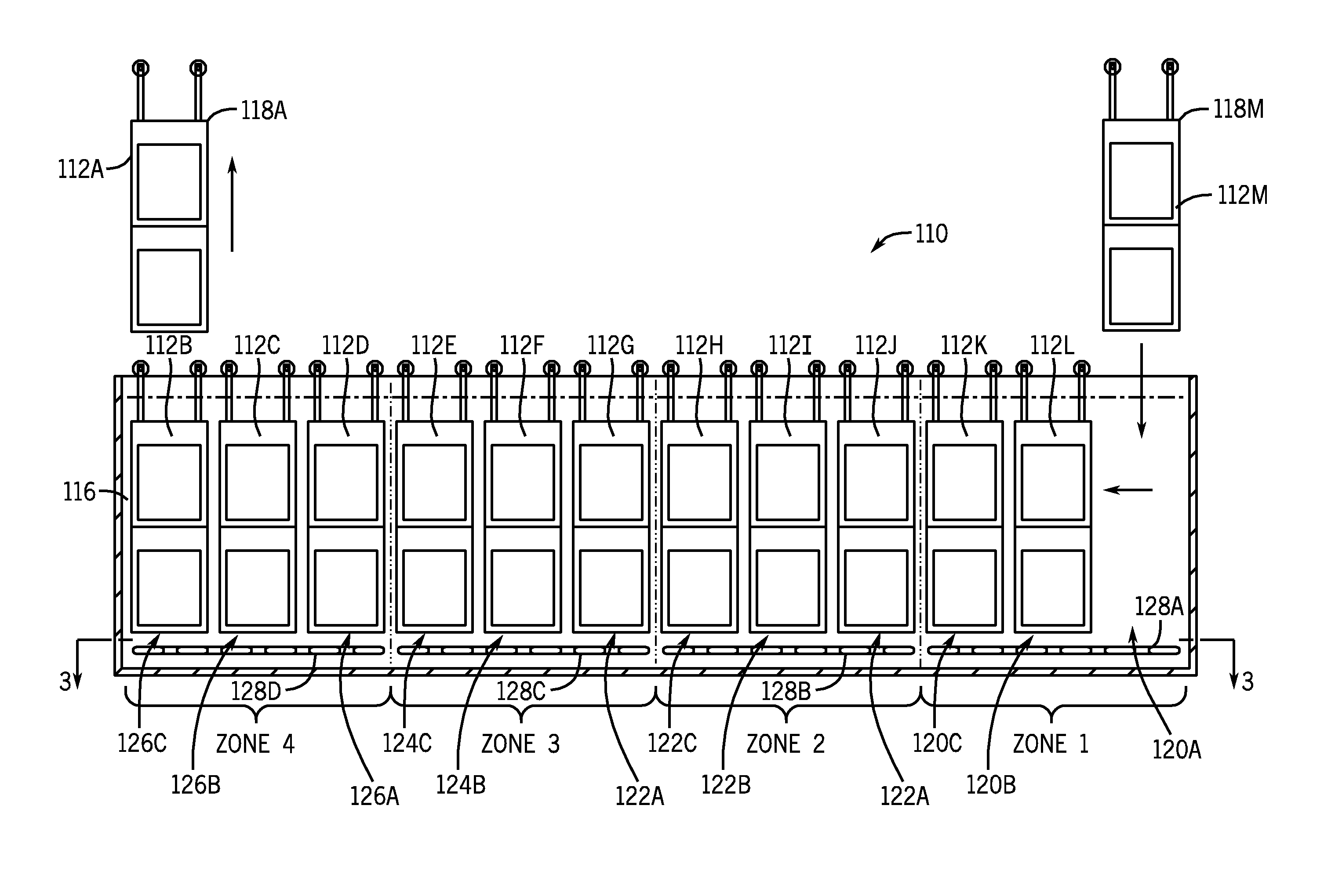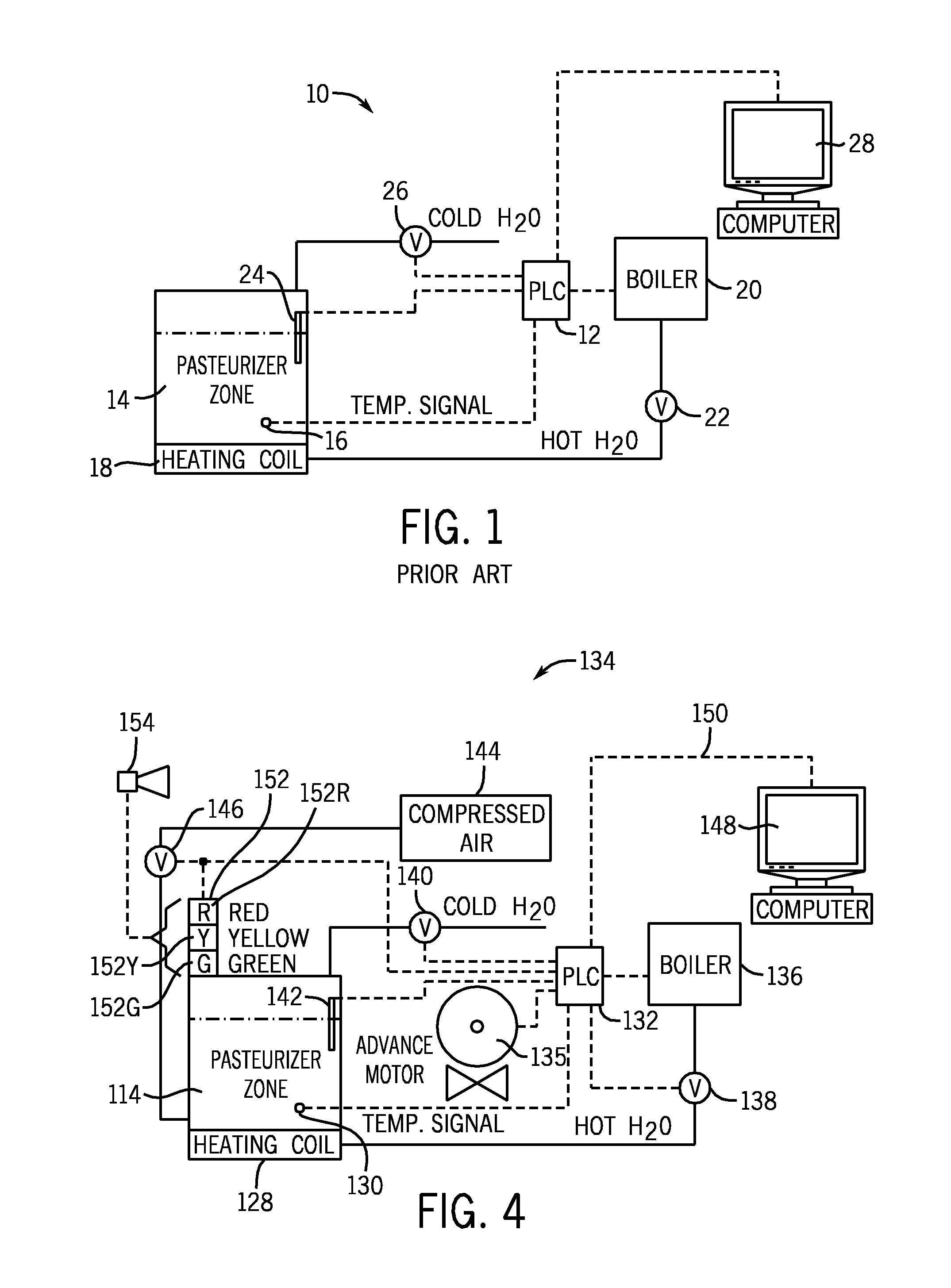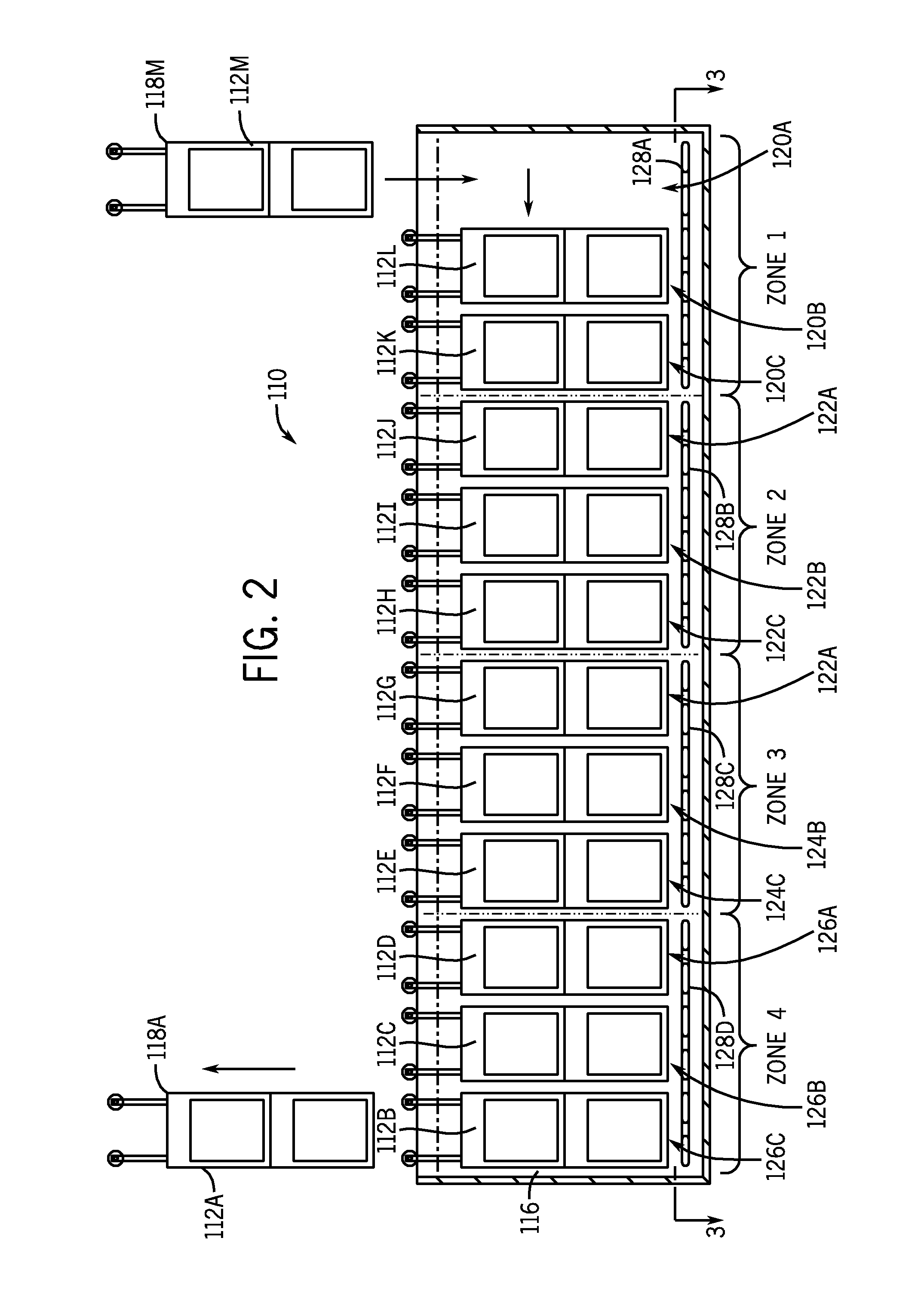Shell Egg Pasteurization System and Method
a shell egg and pasteurization technology, applied in the field of shell egg pasteurization systems, can solve the problems of partial cooking or loss of quality and functionality of shell eggs, no longer carrying significant quantities of salmonella, and affecting the quality of shell eggs, so as to reduce the magnitude of temperature sag, accelerate temperature recovery, and reduce the overall dwell time
- Summary
- Abstract
- Description
- Claims
- Application Information
AI Technical Summary
Benefits of technology
Problems solved by technology
Method used
Image
Examples
Embodiment Construction
[0030]FIGS. 2 and 3 illustrate a shell egg pasteurization system 110 in which batches 112A through 112M of eggs are passed through four zones (Zones 1 through 4) of a pasteurization bath 116. In commercial operations, it is not efficient or cost effective to pasteurize a single egg, a single row or even a single layer of shell eggs at a time. Therefore, it is known in the art to pasteurize batches of eggs containing several stacked layers of eggs. For example, a flat may contain 2-½ dozen eggs, with a stack containing four layers of flats and each batch containing 16 stacks loaded onto a carrier 118A through 118M. Generally speaking, the bath 116 must heat not only the eggs, but also the flats and the carriers. Even though the carriers 118A-118M and the flats are typically the same whether the eggs being pasteurized are medium size, large, ex-large or jumbo, the different size and weight of the eggs as well as the potentially different starting temperature for the eggs in the batch ...
PUM
 Login to View More
Login to View More Abstract
Description
Claims
Application Information
 Login to View More
Login to View More - R&D
- Intellectual Property
- Life Sciences
- Materials
- Tech Scout
- Unparalleled Data Quality
- Higher Quality Content
- 60% Fewer Hallucinations
Browse by: Latest US Patents, China's latest patents, Technical Efficacy Thesaurus, Application Domain, Technology Topic, Popular Technical Reports.
© 2025 PatSnap. All rights reserved.Legal|Privacy policy|Modern Slavery Act Transparency Statement|Sitemap|About US| Contact US: help@patsnap.com



